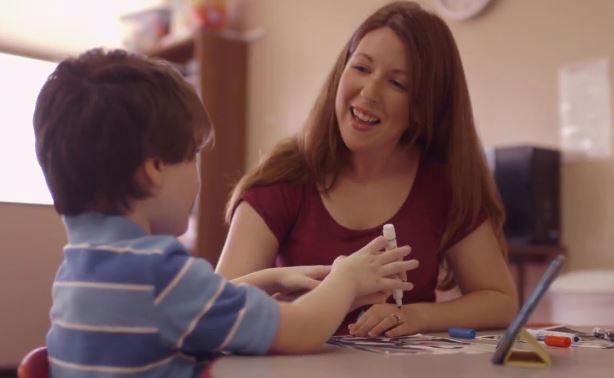To assist people with autism in the area, the Brazos Valley Rehabilitation Center partnered with the Center on Disability and Development at Texas A&M in 2010 to create a specialized clinic offering diagnostic assessment and behavioral intervention.
Now, five years later, A&M faculty members are working with the Autism Clinic and Project RICOTA, two programs in the CDD, to utilize augmentative and alternative communication apps to help those with autism improve their communication skills. The apps, “TapToTalk” and “Go Talk Now,” use interactive pictures and speaking functions to teach people with autism how to clearly convey their message.
Jennifer Ganz, professor of educational psychology and affiliated faculty at the CDD, said she and her students are using communication apps specifically to study autism. Ganz said the characteristics of autism lie on a spectrum — an individual’s behavioral habits can fall anywhere from not speaking at all to above-average speech capacity.
One approach employed by the apps to help people with autism is called “visual scene display,” Ganz said. For example, an app will display a photo of a child surrounded by various toys. When the user taps on different images of toys, the app will play a sound bite naming the item. They may see one picture at a time or the grid might be more complex, Ganz said.
When teaching a child to use a communication app for the first time, the researchers use several behavioral techniques to motivate the child to communicate, said Kristi Morin, educational psychology doctoral student.
“For example, we will have a few of the child’s favorite toys in sight but out of reach,” Morin said. “When the child reaches for the toy, we will guide his or her hand to prompt the use of the app. Once the voice output feature of the app is activated, we immediately give the child access to the toy as a reward. After repeating this sequence several times, the child starts to learn that he or she needs to touch the app to get the toy.”
With time, the child will independently use the device, Morin said.
Before the technological approaches, Morin said children with autism had limited options when it came to communication devices. Large communication boards or books were generally used, but Morin said these devices had the potential to socially isolate the child.
“Children with autism often feel ‘cool’ when they are carrying around an iPad to communicate versus a large communication board,” Morin said. “In addition, apps have the advantage of having voice output so the child can hear the word or sentence spoken after it is touched.”
When the Brazos Valley Rehabilitation Center first opened its doors to those with autism, it helped 10 individuals. Since then, that number has quadrupled.
Educational psychology doctoral student Margot Boles said efforts over the last three years have pushed to develop and enhance programs for individuals with autism in the Brazos Valley. As part of this push, Boles said the Autism Clinic has sessions to help people with autism in their daily life.
“The Autism Clinic offers group and private therapy to promote communication, social interaction and daily living skills training to individuals with autism in the community,” Boles said.
While this technology gives individuals with autism a way to communicate their wants, needs and emotions, there is the downside of not having the same interaction as when the individuals use picto-cards with a partner.
“So that’s somewhat challenging with apps on these mobile devices, to figure how to best teach them to have that social approach and to use it for communication because they’re so used to using iPads for watching their favorite videos or playing games,” Ganz said. “We’re working how to best teach them to use them also as communication.”
Researchers work with apps tailored toward autistic kids
April 15, 2015
0
Donate to The Battalion
$1815
$5000
Contributed
Our Goal
Your donation will support the student journalists of Texas A&M University - College Station. Your contribution will allow us to purchase equipment and cover our annual website hosting costs, in addition to paying freelance staffers for their work, travel costs for coverage and more!
More to Discover










